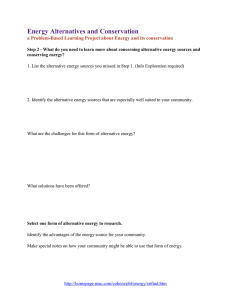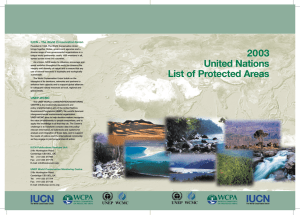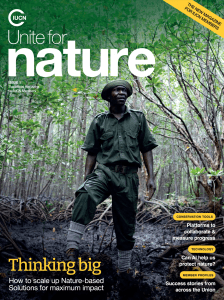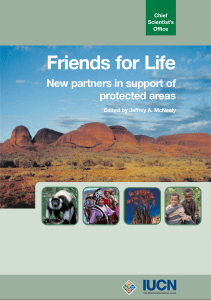Fortress Conservation The Construction of a New Eco-Hegemony?
advertisement
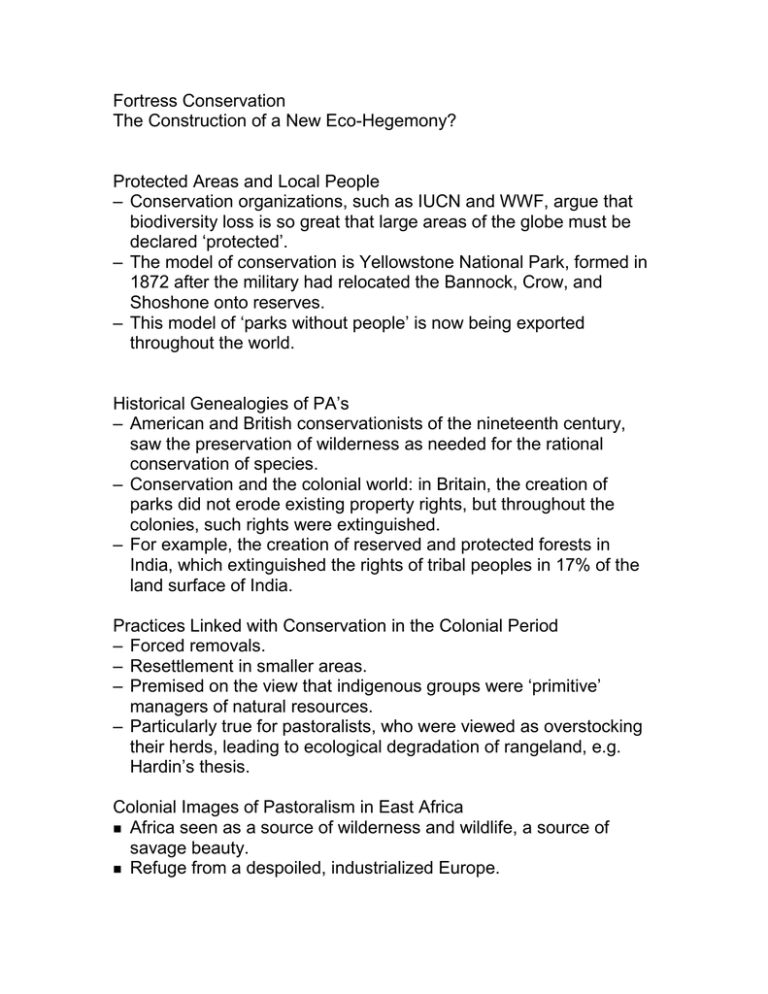
Fortress Conservation The Construction of a New Eco-Hegemony? Protected Areas and Local People – Conservation organizations, such as IUCN and WWF, argue that biodiversity loss is so great that large areas of the globe must be declared ‘protected’. – The model of conservation is Yellowstone National Park, formed in 1872 after the military had relocated the Bannock, Crow, and Shoshone onto reserves. – This model of ‘parks without people’ is now being exported throughout the world. Historical Genealogies of PA’s – American and British conservationists of the nineteenth century, saw the preservation of wilderness as needed for the rational conservation of species. – Conservation and the colonial world: in Britain, the creation of parks did not erode existing property rights, but throughout the colonies, such rights were extinguished. – For example, the creation of reserved and protected forests in India, which extinguished the rights of tribal peoples in 17% of the land surface of India. Practices Linked with Conservation in the Colonial Period – Forced removals. – Resettlement in smaller areas. – Premised on the view that indigenous groups were ‘primitive’ managers of natural resources. – Particularly true for pastoralists, who were viewed as overstocking their herds, leading to ecological degradation of rangeland, e.g. Hardin’s thesis. Colonial Images of Pastoralism in East Africa Africa seen as a source of wilderness and wildlife, a source of savage beauty. Refuge from a despoiled, industrialized Europe. Pastoralists, however, were viewed as warlike, wild, improvident resource users: E.g. Lord Lugard: The Masai country has at present the disadvantage that its inhabitants are purely pastoral, and hence there is no culotivation in the country…the warlike instincts of the Masai, moreover, render them at present an obstacle to peaceful development…’ Postcolonial Approaches – Mainly a continuation of the past: however, the colonial state was replaced by ‘developmental’ state, which viewed subsistence communities as a hindrance to development. – Resettlement policies were aimed at changing pastoralists into cultivators and justified as a means of bringing services to rural areas. – In the wake of the Rio conference on the environment, IUCN argued for the inclusion of greater areas, 10% or more in many developing countries, into Protected Areas. – Shift Towards a Rights Based Discourse after 2000 by IUCN and WWF. Protected Areas Fall into three categories: – National Parks – Biosphere Reserves – Wildlife Sanctuaries – These are differentiated by the extent to which they allow human habitation and human use of parks. Experiences of Local Communities with Protected Area Management – Top-down planning – Lack of participation – Impoverishment – Loss of land and culture – Resistance and conflict: in India, there has been conflict in 222 of the 500 PAs. – Even with CBC, management is mediated through centralized bureaucracies. – ‘Best’ practices, e.g. in Australia, where land titles and comanagement have been recognized. Producing Authoritative Ecological Knowledge – World Bank now requires EIA for all projects, especially dams. – The ‘green’ component of infrastructure projects is to create National Biodiversity Conservation Areas, or Protected Areas. Part of the conditions of SAPs. – Contracts for the WB require rapid rural appraisal as part of the SIA. – IUCN was to get money for the NBCA from the dam profits. – Researchers complain of the suppression of their studies, particularly those related to resettlement. Where to Go From Here? – Need for studies on indigenous ecological practises and education of ecologists in order to counteract modernist prejudice – Important for indigenous people to have a presence at national and international conferences and meetings that decide the fate of local resources. – Need for recognition of indigenous land title on the basis of their long-standing possession and habitation of territory. – Need for new approaches, e.g. multiple-access, which are based on a balance between human beings and ‘the natural world.’




